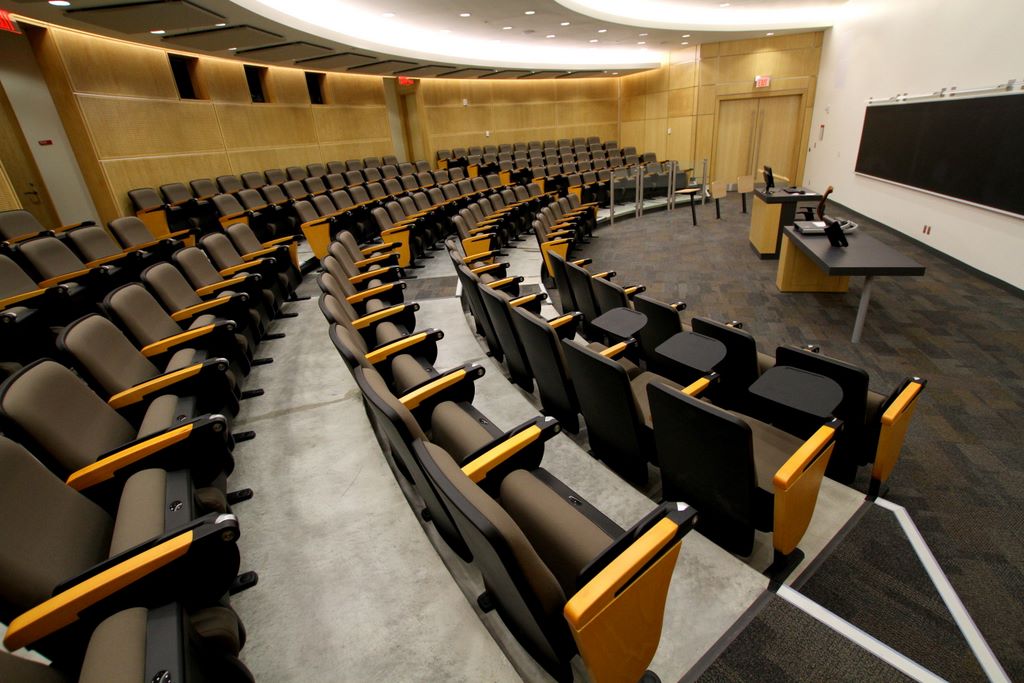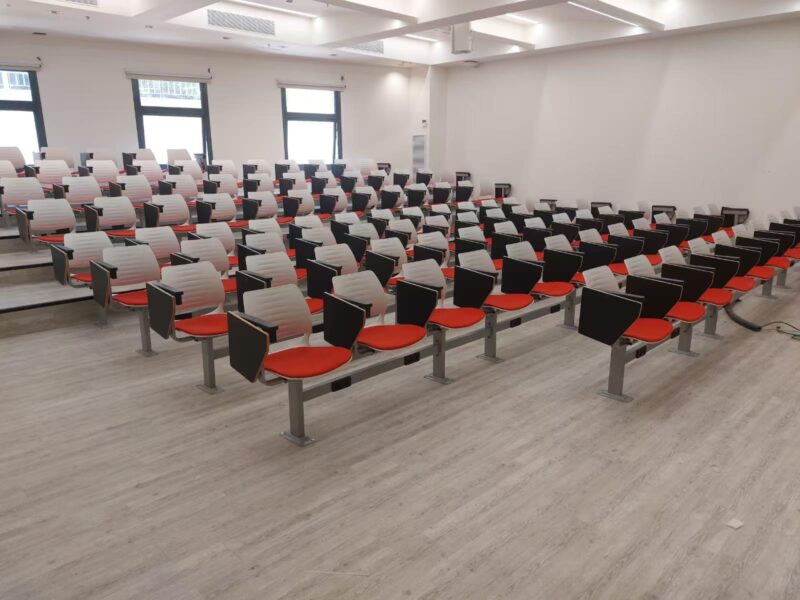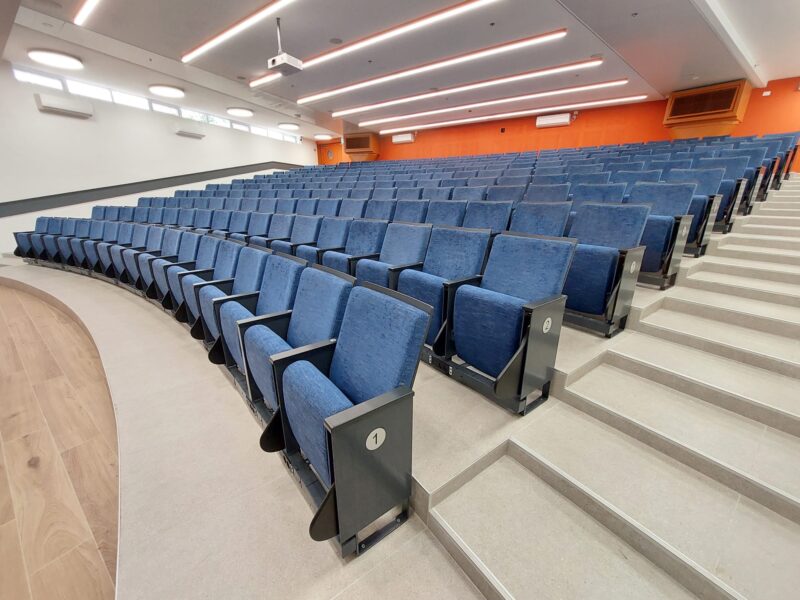The physical environment of lecture halls plays a pivotal role in shaping students’ learning experiences and academic outcomes. Comfortable seating arrangements and well-designed spaces are not merely luxuries but essential components that directly influence students’ ability to maintain focus, engage with course material, and participate actively in class discussions. Research has consistently shown that when students are physically comfortable, they demonstrate improved concentration levels, better information retention, and increased willingness to participate in classroom activities, ultimately leading to enhanced academic performance.

Optimal Features of Modern Lecture Theatre Chairs
Creating the right lecture hall chairs is key to making students comfortable and focused in class. Today’s chairs are designed to make learning better. They have features like ergonomic design, good writing surfaces, places to store things, and tech to make sitting more comfortable.
Ergonomic Design
Poor-design lecture room seating and arrangements often lead to physical discomfort, resulting in fidgeting, poor posture, and reduced attention spans. Key ergonomic considerations include adjustable seat height, proper lumbar support, adequate desk space, and sufficient legroom. Modern ergonomic solutions incorporate features such as cushioned seats with breathable materials, curved backrests that support natural spine alignment, and writing surfaces positioned at optimal angles to reduce neck and shoulder strain. Proper spacing between rows not only enhances physical comfort but also contribute to better blood circulation, reduced muscle fatigue, and increased cognitive function, ultimately fostering a more conducive learning environment.
Sight lines and sightedness
Optimal sightlines in lecture halls are crucial for maintaining student engagement and reducing visual strain. To improve sightlines, lecture halls should incorporate tiered seating with appropriate height, ensuring unobstructed views of teaching areas. Additionally, implementing larger projection screens, multiple display monitors strategically placed throughout the hall, and clear spacing between rows can significantly enhance visibility. These improvements help students maintain proper posture while ensuring clear views of educational content, ultimately contributing to better concentration and learning outcomes.

Speicherlösungen und Barrierefreiheit
Stühle und Schreibtische mit eingebautem Stauraum können das Lernen organisierter und effizienter machen. Sie sollten leicht zugängliche Plätze für Laptops, Bücher und andere Gegenstände haben. So bleiben die Schüler konzentriert und vermeiden Unordnung. Außerdem sollten die Stühle bequem und leicht zu bewegen sein.
Technologien zur Komfortverbesserung
Moderne Hörsaalbestuhlung kann mit verschiedenen technischen Merkmalen ausgestattet werden, um das Engagement der Studierenden und die Lerneffizienz zu steigern. Intelligente Schreibtische mit eingebauten Steckdosen und USB-Ladeanschlüssen sorgen dafür, dass die Geräte der Studierenden während der Vorlesung betriebsbereit bleiben. Einige fortschrittliche Sitzsysteme verfügen über Tablet-Arme mit integrierten Touchscreens, die eine interaktive Teilnahme an Umfragen, Quizzen und gemeinschaftlichen Aktivitäten ermöglichen. Darüber hinaus ermöglichen Sitze mit eingebauten Rückmeldesystemen Echtzeit-Feedback und die Verfolgung der Teilnahme. Diese technologischen Verbesserungen verbessern nicht nur die physische Lernumgebung, sondern erleichtern auch das aktive Lernen, die digitale Aufzeichnung von Notizen und die nahtlose Integration persönlicher Geräte in das Bildungserlebnis.

In conclusion, the impact of lecture hall seating on student comfort and concentration cannot be overstated. A well-designed seating environment that combines ergonomic principles, optimal sightlines, and modern technology creates an ecosystem that supports sustained attention and effective learning. When institutions invest in quality seating infrastructure, they demonstrate a commitment to student well-being and academic success. The synergy between physical comfort and technological integration not only enhances the immediate learning experience but also contributes to long-term educational outcomes.
 EN
EN ES
ES FR
FR NL
NL